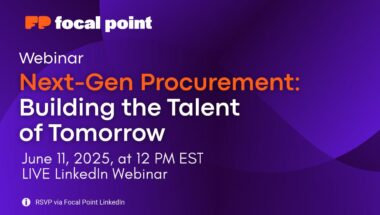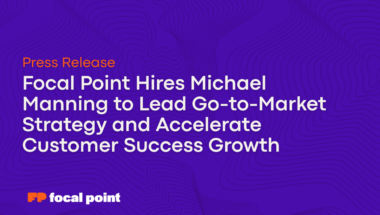The Age-Old Question: To Build or To Buy?
Anders Lillevik, Focal Point
Since SAP launched its first out-of-the-box software, R3 in the 1990s, technology leaders have favored pre-configured solutions for their convenience, time to implement, and relative affordability. But as every business became more digital and new solutions hit the market, CIOs found themselves inundated with software. How can they determine the ROI across the entire suite of SaaS tools, many with overlapping use cases?
With budgets constrained during an economic downturn, every CIO should be asking which is more cost-effective: Build a make-do solution using existing tools or buy software that’s tailor-made to solve a specific business challenge? CIOs should also be aligned with other business leaders on departmental-specific software (CFO, Chief Procurement Officer, CMO, etc.) For many operational functions like accounting, it will never make sense to build, or even buy a highly-customized solution from scratch. However, for some legacy software (procurement for example), the only way to truly innovate is with a new solution that unifies all of the organization’s needs into one platform.
Take a CRM and project management tool as another key example. If an organization currently uses Salesforce’s CRM to manage its customers and prospects and Monday.com to stay organized internally, when is it time to forgo both and opt for an all-in-one tool that may have more features? Adobe popularized this model when it migrated to Creative Cloud in 2013 and eliminated the sale of individual software tools, giving customers access to a suite of applications.
Nearly a decade later, the pandemic exposed a vulnerability that much of the enterprise had swept under the rug: the need to establish proper data-based workflows that strengthen collaboration across disparate teams and enable data-backed decision-making at a glance rather than on impulse or gut instinct. As a result, optimization, consolidation and standardization of workflow tools are trending. It can be tempting to invest in one solution or hosting platform and customize it to fit the unique needs of the business versus buying several smaller tools. But, what is the cost—in time, manpower, and lost efficiency—of customizing a workflow solution that was not built for the business’s specific needs, but looks appealing because of its unified interface? Let’s break it down:
The Cost: Upfront and Hidden
The reason it is so challenging to identify the ROI on large-scale IT projects is that—like an iceberg—many of the implementation costs lie below the surface. According to widely-cited research from McKinsey, 45% of large-scale IT projects go significantly over budget. Purchasing one or more software tools to help smooth operations carries a significant cost up front, but customizing it can mean a months-long investment from IT teams. Further, there is the potential to incur additional expenses in training employees on the new solution. Training may be required for any new tool, but with fewer tools that provide more intuitive processes, efficiency will be promoted and complexity reduced.
To zero in on the ROI of potential software investments, some experts suggest using a true cost of ownership TCO calculation. This back of the napkin equation takes into consideration initial cost, maintenance costs over five years, the cost of downtime, and the remaining value after five years of depreciation. At a glance, this could indicate whether it’s time to build or buy, but one Forbes Council contributor suggests that measuring the software’s impact on business outcomes may be more valuable. To do so, Tim Mitrovich suggests decision-makers ask themselves the following questions:
- Is this solution a differentiator?
- Has a specific tool become the limiting factor for the business?
- Does this solution integrate seamlessly across the organization?
The Benefits of a Perfect-fit Solution?
Though they can be hard to find, an out-of-the-box software solution that was designed to address an industry or vertical’s specific pain points is often the most cost-effective investment. Such solutions are sometimes built by business leaders turned entrepreneurs eager to create a workflow tool that fits naturally within a specific department. This narrow category of out-of-the-box solutions is appealing because of their accuracy and reliability, increased efficiency and productivity, and the potential for significant savings over time.
To discover which tools are out there, CIOs should keep an ear to the ground and rely on communities where other leaders are frequently sharing their software discoveries. With new tools coming to market daily, keeping an eye on the trends is important for leaders who have a longer runway to implement a new solution and have time to evaluate what may be a near-perfect fit.
So Build or Buy, Which is It?
Ultimately, the decision to build a custom solution, buy one that closely aligns with an organization’s specific needs, or make do with the tools already in play will vary for every decision-maker. But what’s clear is that before any decisions can be made, CIOs should understand which business outcomes they play a direct role in pushing forward. Then, they should look for a solution with a track record of success in similar industries or business models. Finally, they should compare the cost of expanding the current solution with onboarding a new one, and acknowledge that there is a learning curve that comes with a change of any size



